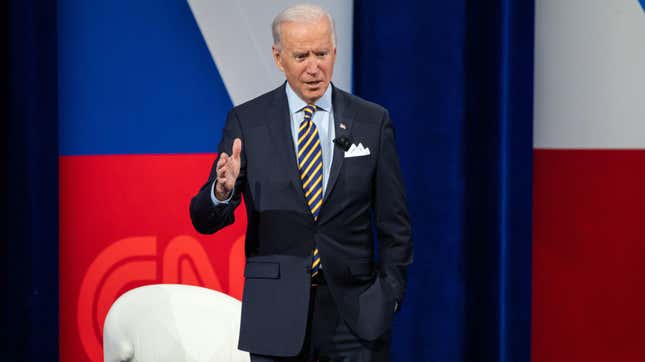Who the Hell Is Advising Biden On This Student Loan Mess?
Politics

More than one in four American adults have student loan debt, a $1.71 trillion crisis that outpaces credit card debt and has left the average student borrower with $33,000 in loans. College costs are rising eight times faster than both wages and inflation, and this burden is especially heavy for Black students, with 86.6 percent of Black students taking out federal loans (compared to 59.9 percent of white students) and landing in higher debt than their white peers. Couple that with the millions of borrowers who don’t even have a college degree, and you’ve got swaths of Americans who could use a break.
A majority of that debt can be erased overnight with a stroke of a pen, eliminating the entirety of student loan debt for millions of Americans, closing the racial wealth gap, and freeing up money that can help stimulate the economy. There’s just one problem: President Biden isn’t too keen on the idea.
During a CNN Town Hall event Tuesday, a woman suffering from student loan debt asked President Biden what he will do to make the cancelation of $50,000 of student loans per borrower a reality, as opposed to the $10,000 cancelation Biden has championed.
“I will not make that happen,” Biden said. “It depends on whether or not you go to a private university or a public university. It depends on the idea that I say to a community I’m going to forgive the debt—the billions of dollars of debt—for people who have gone to Harvard and Yale and Penn… rather than use that money to provide for early education and for young children who come from disadvantaged circumstances.”
-

-

-

-

-

-

-

-

-

-

-

-

-

-

-

-

-

-

-

-

-

-

-

-

-

-

-

-

-

-

-

-

-

-

-

-

-

-

-

-








































